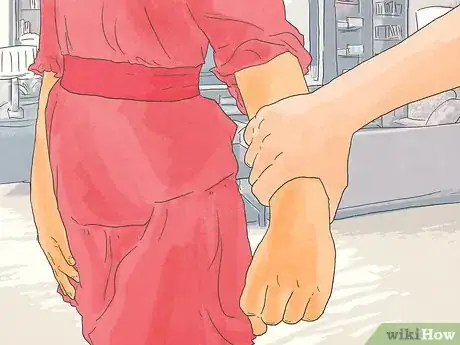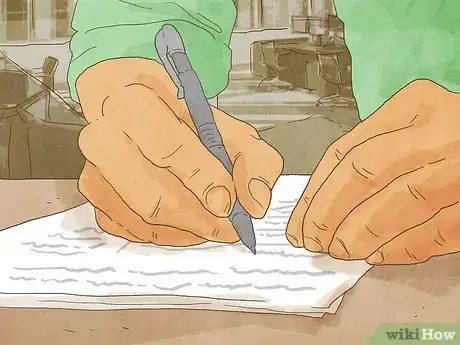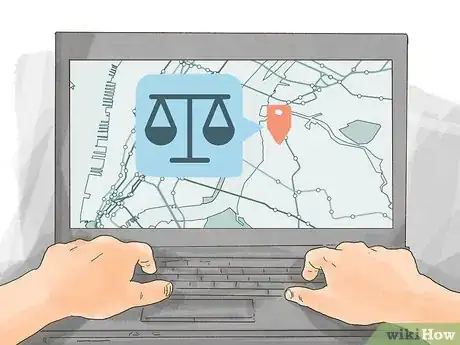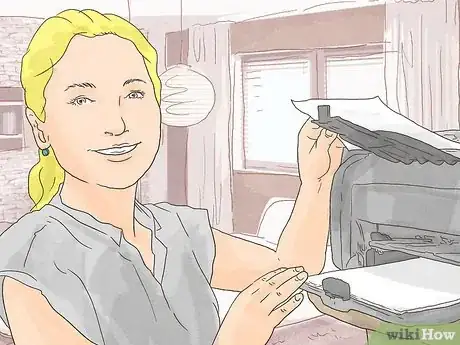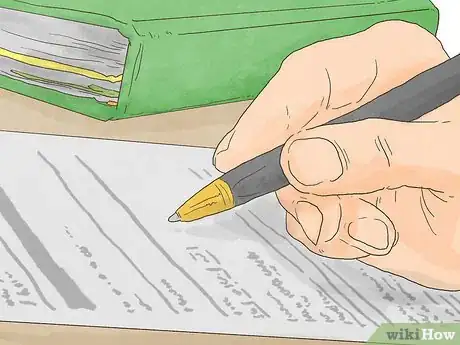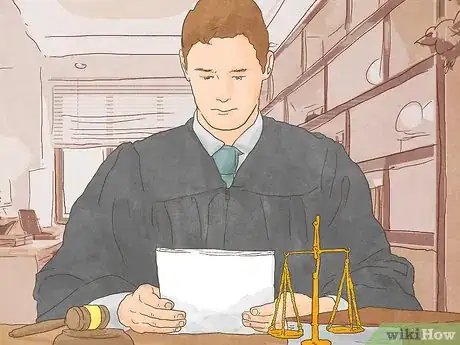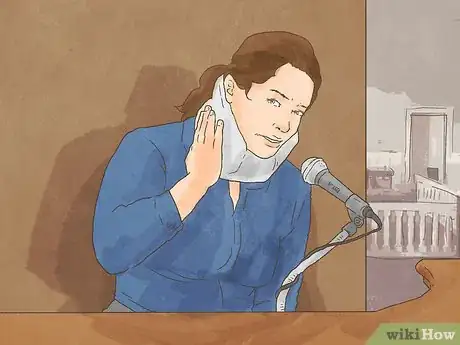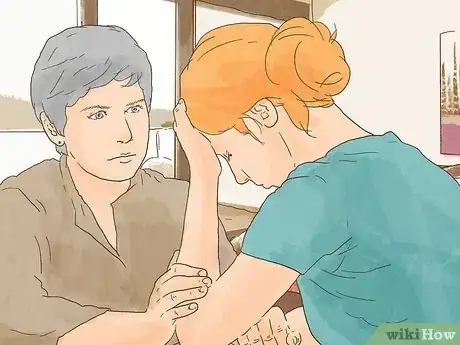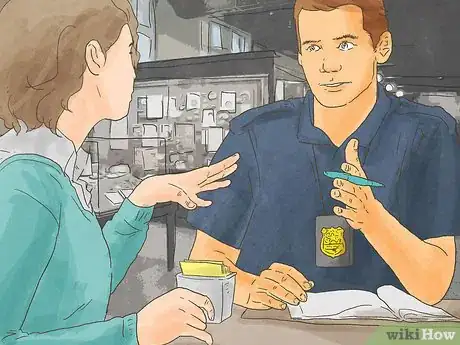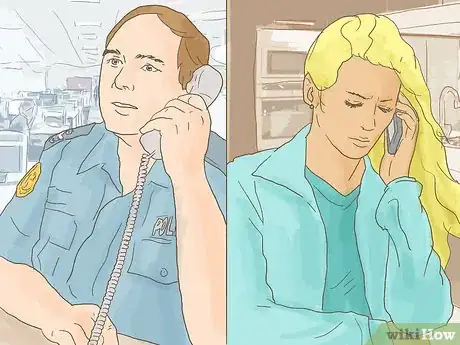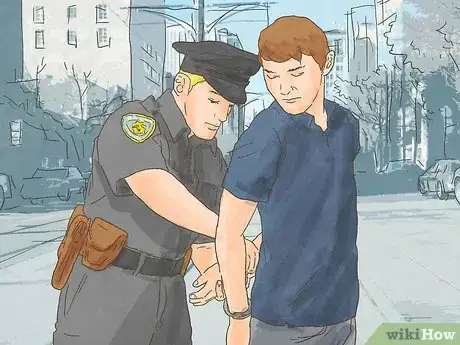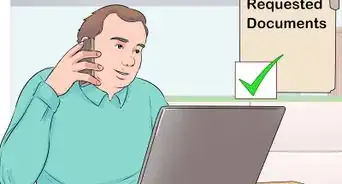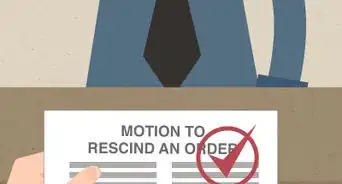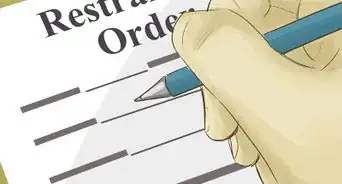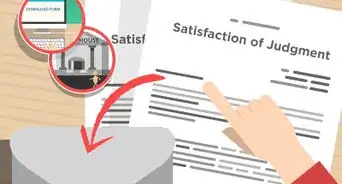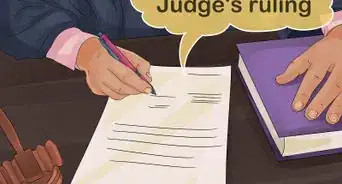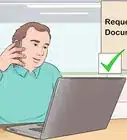This article was co-authored by Clinton M. Sandvick, JD, PhD. Clinton M. Sandvick worked as a civil litigator in California for over 7 years. He received his JD from the University of Wisconsin-Madison in 1998 and his PhD in American History from the University of Oregon in 2013.
wikiHow marks an article as reader-approved once it receives enough positive feedback. In this case, 100% of readers who voted found the article helpful, earning it our reader-approved status.
This article has been viewed 82,082 times.
In Florida, a restraining order is called an “injunction for protection.” It is issued by a civil court and commands the person named in the restraining order to refrain from doing something, usually contacting you or your children or coming within a specified distance of you (say 500 feet). Although the process for getting a restraining order may vary slightly depending on the county, the general procedure is the same.
Steps
Understanding the Requirements
-
1Understand domestic violence restraining orders. You can get a domestic violence restraining order against a spouse, former spouse, or someone related by blood or marriage. The person must be living with you now or has in the past. You can also get one against the parent of your child, regardless of whether or not you were married or ever lived together.[1] Here are common examples of domestic violence:[2]
- assault and aggravated assault
- battery and aggravated battery
- sexual assault and battery
- stalking and aggravated stalking
- kidnapping or false imprisonment
- any criminal offense resulting in physical injury or death of one family or household member by another family or household member
-
2Identify the factors for determining “imminent danger” of harm. You can get a domestic violence restraining order even if abuse hasn't happened yet. Instead, you can get a restraining order if you are in “imminent danger” of violence. The court will look at a variety of factors when determining “imminent danger”:[3]
- the history between you and the abuser, including threats, stalking, physical abuse, and harassment
- if any attempt has been made to harm you or your family members
- if you have been threatened to have your children harmed or kidnapped
- if the abuser has intentionally injured or killed a family pet
- If the abuser has used or threatened to use any weapons against you
- if the abuser has restrained you from calling the police or leaving your home
- if the abuser has a criminal history involving violence or threats of violence
- if there is any prior order of protection entered against the abuser
- if the abuser has destroyed your personal property
- any other action that would lead you to reasonably believe that you are in immediate danger of domestic violence
Advertisement -
3Identify other restraining orders. If you do not qualify for a domestic violence restraining order, then you could get a different restraining order. There are four other kinds, depending on the kind of violence and your relationship to the abuser: stalking violence, repeat violence, sexual violence, and dating violence.[4]
- Stalking violence: Someone purposely follows or harasses you repeatedly over a period of time for no legitimate purpose, which causes you emotional distress. If during the stalking the person threatens your life or to harm you, with the intent to cause you reasonable fear for your safety, then the stalking is aggravated.[5]
- Repeat violence: Two acts of violence or stalking on two separate occasions, one of which happened in the past six months. These injunctions are usually appropriate for disputes involving neighbors, coworkers, or other non-dating relationships.[6]
-
Sexual violence: You have reported the incident to law enforcement and have been cooperating in criminal proceedings; or the abuser is about to be released from prison in the next 90 days and has been imprisoned for:[7]
- sexual battery
- lewd or lascivious acts committed against someone under 16
- luring or enticing a child
- sexual performance by a child
- any felony where a sexual act was committed or attempted
- Dating violence: Violence or stalking between two people who have been in a dating relationship for the past six months, have had expectation of sexual involvement, and have been involved on a continuous basis. The violence can consist of assault, battery, sexual assault, stalking, kidnapping, false imprisonment, or any criminal offense resulting in physical injury.[8]
-
4Understand the scope of a restraining order. You can ask the judge to restrain the abuser in various ways. In addition to restraining the abuser from abusing you again, a restraining order can command the abuser to stay away from your home, school, or job. It can also prohibit the abuser from contacting you, either directly or through a third party.[9]
-
5Complete a domestic violence intake questionnaire. Some counties provide a questionnaire you can fill out before going to the courthouse. A completed questionnaire will allow an intake specialist to help you get the right restraining order.[12]
- You can look to see if your county has an intake questionnaire by visiting its website. To find your court, enter your zip code into the “Court Locator” on this webpage. You can then click through to the court's website.
Filing for the Restraining Order
-
1Locate the appropriate court. You can file a petition for a restraining order in the county where you reside, where the abuser lives, or where the violence occurred.[13]
- You should arrive early to complete all paperwork and wait for the judge to make a decision. Try to give yourself at least three hours.
- If it is after 5:00 on a Friday or during the weekend, then you will need to call a crisis center. Each county has its own crisis center that you must call. In Broward County, for example, you would call Henderson Mental Health Center at (954) 463-0911. A clinician will speak to you on the phone. If you qualify for a restraining order, a domestic abuse specialist will then meet with you at the courthouse.
- To find the crisis center you should call, look up your county courthouse's website.
-
2Get the forms. To get a restraining order, you need to file a petition with the court. You can get the printed “fill in the blank” forms from the court clerk, or you can download and fill them out before going to court. You can download the forms here:
- Domestic Violence Restraining Order: a “Petition for Injunction for Protection Against Domestic Violence” form and a “Uniform Child Custody Jurisdiction and Enforcement Act Affidavit” here (if you have minor children). You can also request temporary alimony or child support. If you wish to, then ask the clerk for the forms.
- Stalking Restraining Order: a “Petition for Injunction For Protection Against Stalking,” available here.
- Repeat Violence Restraining Order: a “Petition for Injunction for Protection Against Repeat Violence,” which is available here.
- Sexual Violence Restraining Order: a “Petition for Injunction for Protection Against Sexual Violence,” available here.
- Dating Violence Restraining Order: a “Petition for Injunction for Protection Against Dating Violence,” available here.
- Depending on the court, there may be additional forms. Ask the court clerk if you are missing anything.
-
3Complete the forms. Use black ink to complete the forms and write neatly. You want your handwriting to be legible so that the judge can read your information and not send it back to you. If you download the forms ahead of time, you can use a typewriter to complete them.
- When describing the violence, try to be as specific as possible so that the judge will be able to determine whether you qualify for a restraining order.
- If you do not want the abuser to know where you live, write “CONFIDENTIAL” wherever you write your address on the forms.[14] You should also fill out a “Request for Confidential Filing of Address” form.
-
4Sign the forms. You must sign the forms either in front of a notary public or in front of the court clerk. If you fill out the forms before going to court, be sure to leave the signature line blank.
-
5Get a hearing date. Depending on the county, you may be mailed a hearing date. In other counties, you will need to fill out a Notice of Hearing form. Ask the court clerk how they handle setting up hearings.
- If you have to fill out a Notice of Hearing, then make sure to keep a copy for your records and make a copy for the abuser, who must be notified of the hearing as well.
-
6Serve the abuser with notice. You will need to serve a copy of your petition on the abuser. To help the sheriff find the abuser, complete a “Sheriff's Information Sheet” (available here) with as much information about where the abuser is located as you can provide.
- The sheriff will serve the papers free of charge.[15]
- If the abuser lives outside the state of Florida, you should tell the court clerk. You will need to complete an “Out-of-County Service information Sheet.”
-
7Receive the judge's determination. You should ask the clerk when you will receive the judge's determination. In some counties, you may be told to return at a specific time at the end of the day, such as between 4:00 and 4:30. After you complete your forms, they are taken to a judge. The judge has three options:[16]
- The judge finds that the allegations meet the requirements, in which case the judge issues a temporary restraining order.
- The judge finds that the allegations do not meet the requirements, but the judge nevertheless schedules a hearing. No temporary restraining order is issued.
- The judge finds that the allegations do not meet the requirements and that no hearing is merited. If you are denied a restraining order, you can raise additional evidence of stalking or violence to the judge by filing a “Supplemental Affidavit in Support of Petition for Injunction for Protection,” available here.
-
8Attend a hearing. If the judge issues a temporary restraining order or believes the allegations merit a hearing, then a hearing will be held within seven and fifteen days. At the hearing, the judge will hear testimony from you, the abuser, and witnesses.[17] Ultimately, the judge must decide whether to enter a final restraining order.
- If you know people who witnessed the violence, then ask them if they are willing to testify at the hearing.
- Bring any other evidence of abuse that you have: photographs, video recordings, voice mails, emails, police reports, and copies of restraining orders you may have previously gotten against the abuser.
Using Your Restraining Order
-
1Keep a copy. You should always have a copy of the restraining order in your possession. This way you can show the police that you have a restraining order against the abuser should you need to call them. If you lose your copy, contact the court for another.
-
2Let friends, family, and neighbors know. You should tell people in your life that you have a restraining order and who the order is against. In this way, your friends, family, and neighbors can be on the lookout for the abuser and inform the police if he or she suddenly appears.
- If neighbors don't know the abuser, then share a picture with them, so that they can be familiar with what the abuser looks like.
- If you live in an apartment building, you should let building management know of the restraining order, so they can call police should the abuser enter your building.
-
3File a copy with the police department. You should also send a copy of the restraining order to the police in the county where you live, work, or spend regular time.
- Contact appropriate police departments and ask if you need to fill out a form or if a copy of the restraining order is sufficient.
-
4Call the police if the order is violated. Your first move should be to call the police and file a police report. The police will decide whether or not the conduct warrants criminal charges.[18]
-
5File for violation of the restraining order. Even if the police do not bring criminal charges, you can still bring suit for violation of the restraining order. In Florida, you will need to go to the courthouse that issued the restraining order and fill out a form.
- The form is called an “Affidavit in Support of Violation of Injunction Order.” Be sure to fill out the form specific to your county.
Ending, Modifying, or Extending the Restraining Order
-
1End the restraining order. If you wish to have the restraining order dismissed, then you must make that request to the court. If you fail to get the restraining order dismissed, then the abuser could get into trouble if he or she moves back in with you.
- File for dismissal by filling out a Motion to Dismiss and filing it at the courthouse.
- If a hearing is necessary, you will be notified by mail of the time, date, and location.[19]
-
2Modify the restraining order. Either party can request changes to the restraining order.[20] For example, you may want to add prohibitions, such as a request that the abuser get domestic violence counseling.
- You should fill out this form and file it with the court. You will need to serve notice on the other party, just as you did when you first petitioned for a restraining order.
-
3Extend the restraining order. A restraining order may have been issued to last indefinitely or only for a specific amount of time.[21] If your restraining order has an end date and you want to continue it, then you will need to file for an extension.
References
- ↑ http://www.flcourts.org/core/fileparse.php/533/urlt/980a.pdf
- ↑ https://www.womenslaw.org/laws/fl/restraining-orders/all
- ↑ http://www.flcourts.org/core/fileparse.php/533/urlt/980a.pdf
- ↑ https://www.pinellasclerk.org/aspInclude2/ASPInclude.asp?pageName=domestic.htm
- ↑ https://www.pinellasclerk.org/aspInclude2/ASPInclude.asp?pageName=domestic.htm
- ↑ https://www.pinellasclerk.org/aspInclude2/ASPInclude.asp?pageName=domestic.htm
- ↑ https://www.pinellasclerk.org/aspInclude2/ASPInclude.asp?pageName=domestic.htm
- ↑ http://www.flcourts.org/core/fileparse.php/533/urlt/980n.pdf
- ↑ https://www.womenslaw.org/laws/fl/restraining-orders/all
- ↑ https://www.pinellasclerk.org/aspInclude2/ASPInclude.asp?pageName=domestic.htm
- ↑ https://www.womenslaw.org/laws/fl/restraining-orders/all
- ↑ http://www.miami-dadeclerk.com/families_domestic_violence_filing.asp
- ↑ https://www.pinellasclerk.org/aspInclude2/ASPInclude.asp?pageName=domestic.htm
- ↑ https://www.pinellasclerk.org/aspInclude2/ASPInclude.asp?pageName=domestic.htm
- ↑ https://www.pinellasclerk.org/aspInclude2/ASPInclude.asp?pageName=domestic.htm
- ↑ https://www.pinellasclerk.org/aspInclude2/ASPInclude.asp?pageName=domestic.htm
- ↑ https://www.pinellasclerk.org/aspInclude2/ASPInclude.asp?pageName=domestic.htm
- ↑ https://www.pinellasclerk.org/aspInclude2/ASPInclude.asp?pageName=domestic.htm
- ↑ https://www.pinellasclerk.org/aspInclude2/ASPInclude.asp?pageName=domestic.htm
- ↑ https://www.pinellasclerk.org/aspInclude2/ASPInclude.asp?pageName=domestic.htm
- ↑ https://www.womenslaw.org/laws/fl/restraining-orders/all
- ↑ https://www.pinellasclerk.org/aspInclude2/ASPInclude.asp?pageName=domestic.htm
- ↑ http://www.flcourts.org/core/fileparse.php/533/urlt/980a.pdf
About This Article
A restraining order in Florida is called an “Injunction for protection” and commands someone to refrain from contacting you or coming within a specific distance of you and your home, school, or work. You can generally get a restraining order against someone if they have a history of abuse, violence, sexual violence or stalking, or if you’re considered in imminent danger of harm. For example, even if someone hasn’t been violent towards you, if they’ve threatened you or stalked you multiple times, you should be able to get a restraining order. You can file for the injunction in the county court where you live, where they live, or where the abuse occurred. You can get the relevant forms from the county court or print them at home from their website. After you’ve filed the forms, you’ll need to attend a hearing to determine the outcome. If your injunction is approved, you should serve a copy to the local police so they’re aware of the situation. For more tips from our Legal co-author, including how to file for violation of a restraining order, read on.

